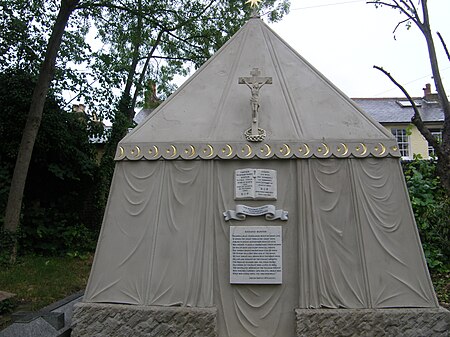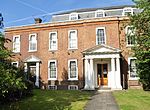Mausoleum of Sir Richard and Lady Burton

The Mausoleum of Sir Richard and Lady Burton is a Grade II* listed tent-shaped mausoleum of Carrara marble and Forest of Dean stone in the churchyard of St Mary Magdalen Roman Catholic Church Mortlake in the London Borough of Richmond upon Thames. It contains the tombs of the Victorian explorer Sir Richard Burton (1821–90), who took part in the search for the source of the River Nile and translated The Arabian Nights, and his wife Isabel, Lady Burton (1831–96), who designed it. The coffins of Sir Richard and Lady Burton can be seen through a glass panel at the rear of the tent, which can be accessed via a short fixed ladder. The inscription includes a commemorative sonnet by Justin Huntly McCarthy (1859–1936), who lived in Putney.The mausoleum was completed in time for Sir Richard's funeral at the church on 15 June 1891. It was restored in 1975 and, with the support of the Friends of Burton and the Environment Trust for Richmond upon Thames, in 2012–13. It is now maintained by Habitats & Heritage. Next to the lady chapel in the church there is a memorial stained-glass window to Burton, erected by his widow.
Excerpt from the Wikipedia article Mausoleum of Sir Richard and Lady Burton (License: CC BY-SA 3.0, Authors, Images).Mausoleum of Sir Richard and Lady Burton
Worple Street, London Mortlake (London Borough of Richmond upon Thames)
Geographical coordinates (GPS) Address Nearby Places Show on map
Geographical coordinates (GPS)
| Latitude | Longitude |
|---|---|
| N 51.46846 ° | E -0.26143 ° |
Address
Worple Street 13
SW14 8HE London, Mortlake (London Borough of Richmond upon Thames)
England, United Kingdom
Open on Google Maps





